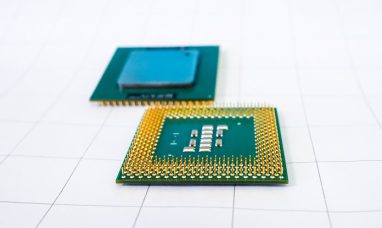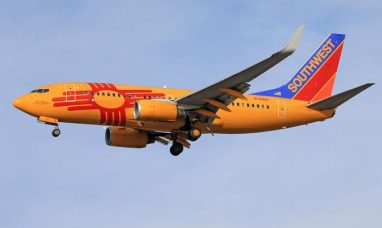I think it’s a smart move to buy Eve Holding (NYSE:EVEX), and I base my judgment on a number of important variables. First off, Eve’s impressive order book, which represents a potential market share of 25% and contains over 2.8 thousand units or about US$8.3 billion, beats its rivals. Eve presents a compelling investment opportunity because of its significant position in the market.
Second, the company stands out from its competitors because of Embraer, which holds around 90% of Eve’s investment. Embraer works as Eve’s service provider in addition to offering financial support. Due to this link, Eve may initially operate with fewer operational costs, which gives it a distinct advantage in a cutthroat market.
Lastly, if only passenger demand is taken into account, the entire addressable market for eVTOL (electric Vertical Takeoff and Landing) vehicles is predicted to exceed US$1 trillion by 2040. This amount may amount to US$3 trillion when cargo and military uses are taken into consideration. This large market opportunity highlights the tremendous growth potential for businesses like Eve, which are at the forefront of eVTOL technology.
Yet it’s important to recognize the dangers and uncertainties that come with funding a budding sector like eVTOL. Our projections could be significantly impacted by the certification procedure and the widespread usage of eVTOL vehicles. Despite these doubts, I continue to have a favorable opinion of the business and the eVTOL market as a whole, and I am certain that my buy rating for Eve is well-founded.
Description of the Business
In October 2020, Eve Air Mobility, an Embraer subsidiary with an approximate 89% ownership stake, was established with the goal of creating electric vertical takeoff and landing (eVTOL) aircraft for use in urban air mobility. Brazilian organization ANAC, which has connections with the FAA and EASA, is offering certification to the corporation. With its eVTOL scheduled to make its debut in 2026, Eve hopes to deliver planes as well as offer services. Eve was successfully spun off by Embraer in 2022 through a SPAC merger with Zanite Acquisition Corp, and on May 10th, 2022, the business started trading on the NYSE. The stock does, however, only have a small daily trading volume of less than $1 million USD at the moment.
Catalysts and Milestones
In 2022, Eve made a number of key advancements in the creation of the eVTOL aircraft. The business carried out helicopter flying tests and simulations in Chicago and Rio to show the practicality of the aircraft’s operational concept. Eve also formalized the type certification application with ANAC, the FAA of Brazil.
A number of impending Eve milestones are anticipated to get the company closer to beginning commercial operations. The company plans to choose suppliers for key systems like batteries and propulsion in the first half of 2023 and start assembling its first full-scale prototype in the second half of that same year. Trial software for urban air traffic control is also scheduled to launch in the second half of 2023, with the test campaign starting in 2024.
Using Embraer’s Experience to Gain a Competitive Advantage
With Embraer’s strong backing, I think Eve Air Mobility is positioned to lead the Urban Air Mobility (UAM) industry. Eve can benefit from Embraer’s more than 50 years of aerospace experience and infrastructure through a service agreement as a spin-off from one of the top aircraft Original Equipment Manufacturers (OEMs) in the world. Due to being able to rely on Embraer’s facilities and employees, Eve can operate more affordably and for less money than its rivals.
Even though I have a generally positive perspective on Embraer (ERJ), I think investing in Eve is a more affordable approach to getting exposure to the stock. This is due to Embraer’s existing ownership of about 90% of Eve, which has a market value of US$1.3 billion and accounts for around 55% of Embraer’s current market capitalization of US$2.4 billion.
Considering that Embraer’s current EV/EBITDA is only 3.2x 23e, compared to its 5-year average value of 8.6x EV/EBITDA, my study indicates that its ex-Eve valuation is distorted. This suggests that the ex-Eve value of Embraer is $1.05 billion USD.
Since Eve’s stock trades for less than US$1 million each day, I think the value difference between it and Embraer is a result of Eve’s liquidity. Additionally, different investors have different goals. For example, while Eve shareholders want to invest in a fast-growing, disruptive company rather than purchasing Embraer and carrying a turn-around case, Embraer investors want to see the company reduce leverage and increase profitability.
Given an average price of US$3 million per unit, Eve stands out as having the biggest number of prospective orders in the sector, totaling about 2.8k eVTOLs or about US$8.3 billion. According to data from SMG Consulting, this amounts to a 23% market share of all prospective orders. Furthermore, no single client accounts for more than 15% of possible orders, and these orders originate from high-quality clients in a variety of industry sectors.
Eve is positioned to gain from the many benefits of eVTOL aircraft, including reduced noise, zero emissions, increased safety, and potential autonomy, as a significant player in the expanding UAM and eVTOL market. These advantages put eVTOLs in a good position to overtake helicopters in market share, particularly in congested urban areas. Within the next ten years, the eVTOL market could possibly double or triple the size of the helicopter business, reaching US$75–100 billion annually. In the coming decades, the eVTOL passenger market might be worth between US$1.0 trillion and US$1 trillion, depending on how much is spent on medical, cargo, defense, and autonomous applications.
Due to Embraer’s strong support, I think Eve has the potential to rank among the top businesses in the Urban Air Mobility (UAM) sector. This assistance is provided under a master services agreement, which enables Eve to benefit from Embraer’s know-how and infrastructure while spending less money upfront and running more efficiently.
Since its founding, Embraer, which has more than 50 years of experience in the development and certification of aircraft and has delivered more than 1.7k commercial aircraft, has given birth to Eve as a spin-off. A master services agreement was signed by Embraer and Eve in 2021, outlining the goods and services Embraer will offer to Eve. Through this arrangement, Eve is able to utilize Embraer’s current resources, expertise, and employees.
The eVTOL Integrated Product Development, which encompasses Type Certificate (TC) approval and support for aircraft approval and certification with ANAC, FAA, and EASA, is covered by the master services agreement. The growth of UAM Business Services, including parts planning, technical support, MRO planning, training, and operating services, is also covered in this chapter. The agreement further forbids Eve from concluding any agreements with third parties for any of the services or products other than those listed in the agreements and grants Eve a royalty-free license to Embraer’s background intellectual property.
According to the contract, Eve will pay Embraer on a daily or hourly basis, often after 45 days. Additionally, there is an exclusivity clause that forbids Eve from entering into agreements with third parties for any services or goods other than those listed in the agreements, which are provided by Embraer.
Reducing the Certification Risk
According to me, Eve’s aircraft design reduces certification risk, which might be a major driver of the business’s success. The certification and operation of eVTOL aircraft grow increasingly difficult as the number of rotors increases. Eve’s multi-rotor aircraft design, however, has 10 rotors in total, including 2 pushers and 8 lifters without tilting elements, which should make it easier to get it certified as an aircraft.
The Brazilian Aviation Authority (ANAC), which will give the regulator undivided attention, will certify Eve’s eVTOL. This strategy differs from those of competitors vying for the attention of the FAA and EASA, like Joby (NYE:JOBY) and Archer (NYSE:ACHR). Eve’s eVTOL may easily be FAA and EASA certified after ANAC certification. Also, throughout its certification process, Eve will receive assistance from Embraer. In the last 25 years, Embraer has certified over 30 different aircraft models, giving Eve more knowledge and assistance.
Joby and Archer, Eve’s competitors, are creating models with 6 and 12 rotors, respectively, which are probably easier to certify than more complicated models like Lilium. The 30 ducted vector thrust rotors on Lilium’s aircraft could improve the aerodynamics of the vehicle but also increase certification and operating risk. There may be difficulties for Lilium because this kind of technology has never been certified.
A Low-Carbon Emission Investment That is ESG-Friendly
The promise of eVTOL technology to drastically lower CO2 emissions in comparison to conventional aircraft is one of the industry’s main growth drivers. eVTOLs have the potential to relieve traffic congestion in big cities, which would further reduce emissions because they are entirely electric and produce no emissions while in operation.
With the low emission of eVTOLs, the replacement of helicopters with them is anticipated to accelerate in the mid-term, especially in urban areas. According to the linked source, the typical fuel burn rate for helicopters is 20 gallons per hour (76 liters per hour).
Furthermore, according to McKinsey, fuel, including its combustion and procurement, is responsible for 99% of a typical narrowbody aircraft’s life cycle CO2 emissions. The remaining 1% is concerned with the production, assembly, upkeep, or materials utilized in the manufacture of airplanes. This emphasizes how crucial battery-electric propulsion, which is employed by eVTOLs, can be to the decarbonization of the aviation sector.
Valuation
My price target for EVEX US in December 2023 is US$8.00, which was calculated by averaging three valuation techniques with equal weights: EV/Revenues, EV/EBITDA, and market share methodology. This valuation compares the current number of 269 million shares to fully diluted shares, which include the conversion of all outstanding warrants.
The market cap of Eve is US$8.05 billion after applying a 3x multiple to its US$3.1 billion in year-end 2029 revenue and accounting for the company’s then-current net debt. I arrive at a value per share of US$7.35 by discounting back at a 30% rate for five years to 2023.
After accounting for the company’s current net debt and applying a 15x multiple to year-end 2029 EBITDA of US$462 million, I arrive at a market cap of US$5.75 billion. I arrive at a value of US$5.25 per share by discounting back at a 30% rate for five years, until 2023.
The 3x sales multiple and 15x EBITDA multiple is comparable to those used in the valuation of companies in the same industry as Lilium (LILM), Archer, and Joby, which are also in the preoperational stage and take into account the risks associated with infrastructure development and aircraft certification. This practice is comparable to that employed by companies who are just entering the market for clean technology and renewable energy in general, such as electric vehicle manufacturers and other cleantech companies that make batteries and fuel cells.
It is important to remember that Eve won’t likely start to turn a profit until a few years after the anticipated certification, which is anticipated in 2026. Between now and the middle of the decade, there is a large execution risk, and unanticipated changes in the competitive environment could have a detrimental effect on the future-state business model.
Nevertheless, I think that our price objective of US$8.00 is acceptable in light of the three valuation methods’ average blended value and the dangers posed by the company’s pre-operational status. I feel that when Eve moves closer to certification and starts operating commercially, my value may be revised upward, offering investors a sizable upside potential.
Financial Risks
Navigating a New Industry’s Uncertainties
Eve Air Mobility encounters difficulties because it operates in a young business with little understanding of the overall addressable market (TAM). The company’s success is reliant on the growth of the complete eVTOL infrastructure ecosystem as well as the development of its own eVTOL aircraft. This covers supply chains, vertiports, air traffic control, and certification procedures. Any of these could experience delays or setbacks that would hinder market growth or shrink the projected market size. Moreover, customer adoption and security issues may have an impact on the company’s prospective market size.
The Certification Process: Navigating It
Eve is presently working towards certification by ANAC, Brazil’s aviation regulatory body. But, there is a chance that the business won’t get permission on time, which can result in order cancellations and a delay in producing free cash flow (FCF). Furthermore, it is essential to validate ANAC accreditation with US and European agencies as soon as possible; otherwise, delivery and FCF expectations may be delayed.
Taking Care of Capital Needs in a Growing Market
It is difficult to predict the company’s mid-term financial requirements because Eve’s eVTOL development and the UAM market are still in their early stages. This can make it necessary to raise more money through equity or debt issues, which might lower shareholder value.
Eve now has $0.00 in total debt and a cash position of about US$250 million. Management anticipates that assuming no further debt, its solid cash position will be sufficient for capital needs through 2025. This indicates that the corporation is completely debt-free and won’t be for several years. In other words, they have no debt and have no immediate plans to acquire any more because their cash reserves will cover all of their expenses in the upcoming years.
Getting Ready for Serious Competition
The market’s rivalry might be more ferocious than expected given that over 15 businesses, including Joby, Archer, and Lilium, are actively working on eVTOL aircraft. These businesses concentrate on a range of aircraft sizes, ranges, and propulsion systems, and increased competition may cause Eve’s market share or profits to fall short of expectations.
Summary
Due to Eve’s impressive prospective order book, strong support from Embraer, and the enormous growth potential in the eVTOL market, investing in the company is a good option. Eve separates out from its rivals with a 25% market share and cheaper operating costs. Up to US$3 trillion in addressable market value is expected for eVTOLs by 2040, which bodes well for businesses spearheading this industry. Yet, it is crucial to understand the inherent dangers and ambiguities in the developing eVTOL sector, including the certification procedure and broad acceptance. Despite these difficulties, I continue to have a favorable outlook on Eve and the eVTOL market, secure in my $8.00 price objective for Eve as of December 23 and my buy rating for the company.
Featured Image: Unsplash @ Pascal Meier









